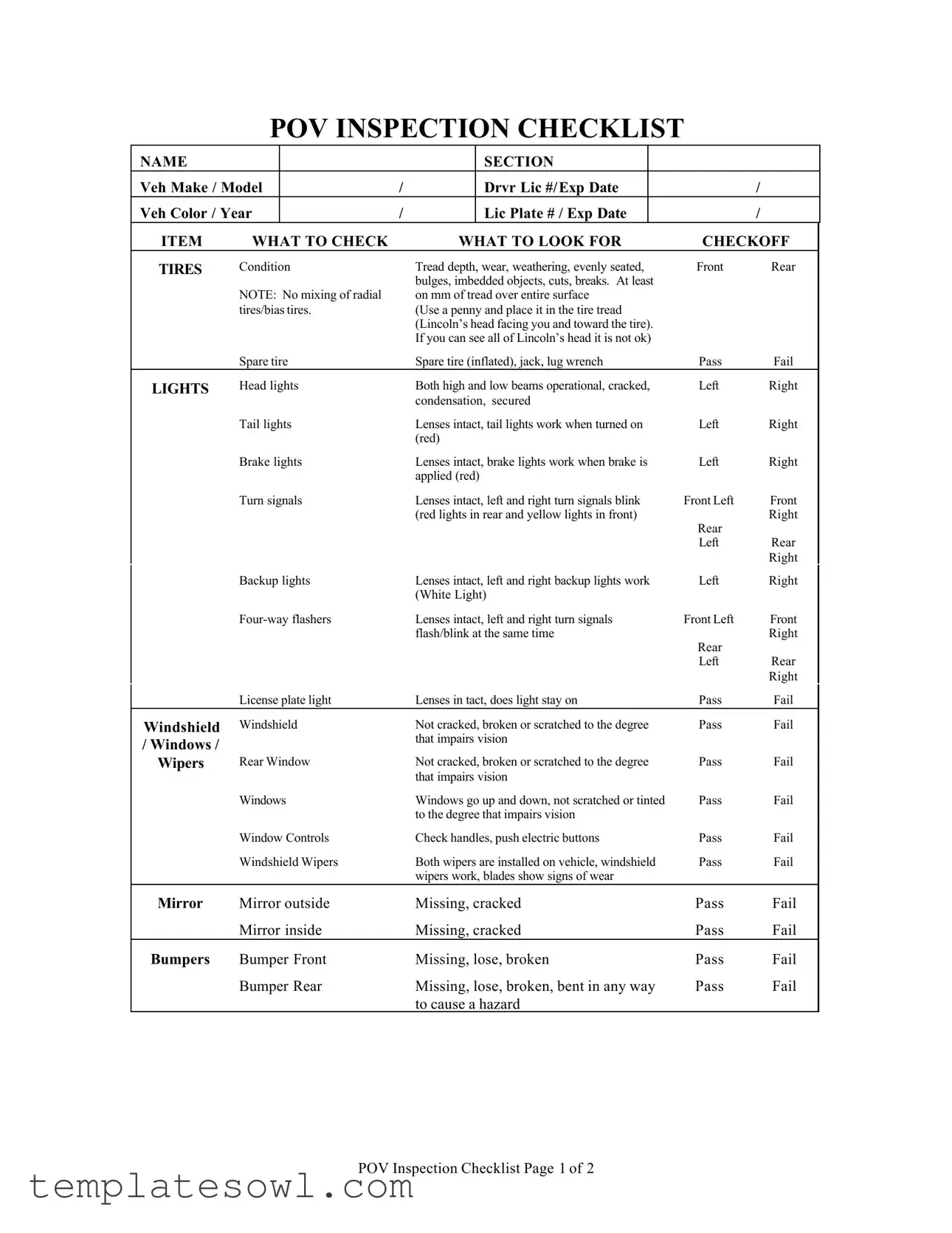What is the purpose of the POV Inspection form?
The POV (Privately Owned Vehicle) Inspection form serves as a comprehensive checklist to ensure that a vehicle meets safety and operational standards. It identifies critical areas of the vehicle that must be evaluated, such as the condition of tires, brakes, and lights, among others. Completing this form helps maintain the safety of the driver, passengers, and other road users by ensuring that vehicles are in good working order before being driven.
What items are covered in the POV Inspection checklist?
The checklist encompasses various important aspects of a vehicle. For instance, it examines the condition of tires, including tread depth and visible damages. It also checks the functionality of lights, such as headlights, brake lights, and turn signals. Furthermore, the inspection assesses the windshield, mirrors, brakes, and emergency equipment. Each section has specific criteria that need to be met, and the inspector must either pass or fail each item based on their condition and functional status.
How do I check the tire condition effectively?
To check the tire condition, assess both the front and rear tires for several factors. Begin by examining the tread depth; using a penny can be quite helpful here. Place the penny into the tread with Lincoln’s head facing you. If you can see the top of Lincoln’s head, the tread is too shallow and the tire is considered unsafe. Inspect for any bulges, embedded objects, cuts, or other visible wear. Additionally, make sure that all tires are evenly seated and that no mixing of tire types occurs.
What should be done if a vehicle fails the inspection?
If a vehicle fails an inspection, it is crucial to address the specific issues identified on the checklist. Repairs need to be made promptly to ensure the vehicle meets safety standards. After completing the necessary repairs, the vehicle must be re-inspected. It is essential for the safety of everyone on the road that all failed items are corrected before driving the vehicle again.
Is emergency equipment necessary during the inspection?
While not always mandatory, having emergency equipment in your vehicle can significantly enhance safety. The checklist allows for optional items such as a first aid kit, warning triangle, flashlight, fire extinguisher, and more. Local laws may also dictate additional equipment requirements. Thus, it is smart practice to be prepared and have necessary emergency supplies ready in case of an unforeseen situation on the road.


